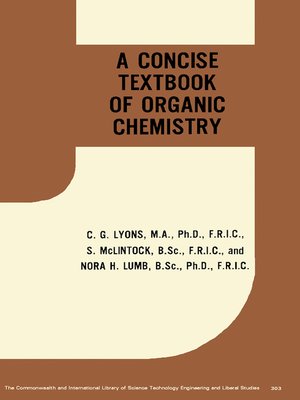A Concise Text-Book of Organic Chemistry
ebook ∣ The Commonwealth and International Library: Chemistry Division
By C. G. Lyons

Sign up to save your library
With an OverDrive account, you can save your favorite libraries for at-a-glance information about availability. Find out more about OverDrive accounts.
Find this title in Libby, the library reading app by OverDrive.



Search for a digital library with this title
Title found at these libraries:
| Library Name | Distance |
|---|---|
| Loading... |
A Concise Text-Book of Organic Chemistry is a handy guide for chemistry students preparing for Advanced Level certificates. The nature of organic chemistry, compared with that of inorganic chemistry, is basically the chemistry of carbon. The book focuses on the arrangements and changes of the atoms inside the carbon molecules. The molecular formulas of organic compounds are therefore studied, including alkanes and their derivatives known as aliphatic or fatty acids, as well as the hydrocarbons of the benzene series and derivatives known as the aromatic compounds. The aliphatic amines as derivatives of ammonia resulting from the substitution of the hydrogen atoms by alkyl groups are described. The formula for methane, although at present is convenient for general purposes, is shown to be not a true representative of the actual arrangement in which four H radicals are grouped around the carbon atom. Castor oil, linseed, and other drying oils are also examined in terms of their glyceride (of other long chain unsaturated acids) content. Carbohydrates, divided as monosaccharides, polysaccharides, and glycosides, are discussed as to their empirical composition. The several methods and reagents for synthesizing organic compounds are explained, using the simple aliphatic organic compounds as an example. The aromatic series of organic compounds, such as the benzene series of hydrocarbons, and the aromatic sulfonic acids, phenols, and ethers are then analyzed. This book is suitable for students of organic chemistry and for those preparing for tests in the General Certificate of Education and for the Ordinary National Certificate. Readers related to agricultural, medical, pharmaceutical, and technological and technical courses can find this guide relevant.







